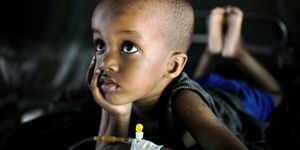Research Calls on Dentists to Help Tackle Sleep Apnea

Obstructive sleep apnea is a disorder characterized by shallow and/or interrupted breaths while sleeping due to obstructed upper airways. The condition reduces the flow of oxygen to vital organs and has been linked to heart failure, insulin resistance, coronary artery disease, and other conditions. The disorder can also cause tiredness, anxiety, and depression. It is linked to reduced cognitive and motor functions, a lower quality of life, and an increased risk of getting into a motor vehicle accident.
Oversized tonsils and tongue indications are high-risk factors for obstructive sleep apnea. Tongue indentations are teeth imprints alongside the tongue, which indicate the tongue is too large for the mouth. Dentists look into their patients’ mouths more often than physicians do. Hypothetically, this puts them in a unique position to identify signs of obstructive sleep apnea.
To test this, between October and December 2014, subjective and objective habitual snoring and obstructive sleep apnea risk assessments were carried out on 200 participants. The researchers tested the patients at dental clinics affiliated with the University of Dammam’s College of Dentistry. They used the Arabic version of the Berlin questionnaire, which screens for obstructive sleep apnea. Two trained researchers took measurements of their patients’ blood pressure, neck circumference, their weight, and the size of their tongue, tonsils, and uvula. They additionally carried out clinical examinations of their patients’ upper airways and dental blockages. The data collected could be used to determine whether the patient was at high risk of obstructive sleep apnea.
Of the male participants, 81.8 percent experienced habitual snoring and 78.3 percent were at high risk of obstructive sleep apnea. Of the females, 18.2 percent experienced habitual snoring and 21.7 percent were at high risk of obstructive sleep apnea. Obese patients were about 10 times more likely to report symptoms of the disorder. Overall, 23 percent of participants were found to be at risk of obstructive sleep apnea. Nearly 80 percent of the at-risk participants were male.
The study shows how dentists can easily find whether a person is at risk for obstructive sleep apnea and refer them to a specialist. Their involvement could cut down on the number of undiagnosed cases.
We need to “educate dentists about the major role they play in identifying and treating patients with sleep-related disorders” by teaching them “about the condition before they get out in the field,” says Al-Jewair, clinical assistant professor in the UB School of Dental Medicine.
The study was published in February 2016 in the Saudi Medical Journal.
Sources: University at Buffalo press release via EurekAlert!, Saudi Medical Journal, U.S. Department of Health & Human Services: Agency for Healthcare Research and Quality








